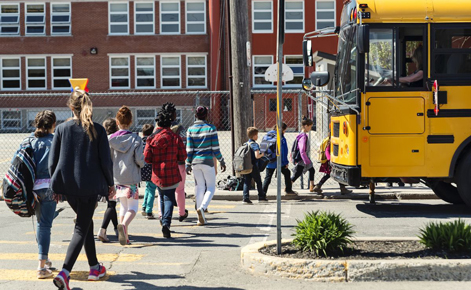This article was created by the Michigan Alliance for Student Opportunity. It is shared here with permission.
The Michigan Alliance for Student Opportunity (The Alliance), a group of member school districts that serve students with the greatest educational needs, in collaboration with Public Policy Associates, and researchers from Michigan State University and the University of Michigan, unveiled a new report on Monday that examines the state of Michigan’s education workforce and the challenges Michigan faces with K-12 staffing. The report was made possible through grant funding from the State of Michigan.

“This report shows what we have long known to be the case, an educator workforce shortage exists that casts a shadow over every Michigan school while acutely affecting schools in economically disadvantaged districts,” said Peter Spadafore, executive director of the Michigan Alliance for Student Opportunity. “As school districts face dwindling resources post-pandemic, we must address the shortfalls confronting our school districts. This will be a challenge, but we must act now to set our students, teachers, and schools on a course for success.”
The Alliance collaborated with Public Policy Associates and researchers from Michigan State University and the University of Michigan to conduct a comprehensive examination of K-12 staffing shortages in Michigan. The year-long study investigated the scope of staffing challenges in all sectors of Michigan’s education system and identified how other states and districts have responded to these challenges. This included analysis of state-level and local administrative personnel data; surveys and interviews of central office administrators, school leaders, teachers, substitutes, and other staff, as well as an intensive review of the existing research literature and the strategies of other states for strengthening the K-12 labor force.
Both state administrative data and reporting from district administrators and school leaders found that adequately staffing schools has become more challenging in recent years. There has been an increase in vacancies and a decline in the number and quality of applicants for open positions. Shortages are particularly severe for special education and STEM (science, technology, engineering, and mathematics) teachers, substitute teachers, paraprofessionals, and bus drivers. Economically-disadvantaged districts have fared the worst.
“In the last couple of years, schools across the state have experienced increased vacancies, more intense competition for staff, and a steep decline in applicants for all kinds of positions,” said Chris Torres, one of the reports principal investigators and associate professor at the Marsal Family School of Education, University of Michigan. “It’s not just teachers, but substitutes, paraprofessionals, and other roles as well. It’s a particular problem for low-income and rural districts, and has a negative impact on communities, families, and educators alike.”
The data show that increased competition over teachers has led to widespread teacher mobility, including recruitment away from districts by neighboring districts. This is disadvantaging districts that serve lower-income students, exacerbating educational inequity. Further, instructional coverage of classrooms due to teacher absences and vacancies is a problem facing many districts. Both survey and administrative data indicate that teacher absence rates increased while the substitute teacher fill-rate declined.
“Many district leaders deeply feel the impact of the educator shortage,” said Jacqueline Gardner, the director of data and evaluation in MSU’s Office of K-12 Outreach. “However, their experiences are incredibly nuanced. While one district may have once had hundreds of applicants and now only has a handful for one teacher vacancy, another district may have an increase in the number of vacancies with no reprieve in sight. These are two different experiences, yet both districts feel the substantial impact of the educator shortage in their district. This is a very complex issue, and a blanket solution will not work. The educator shortage is nuanced, and any effective solutions will likely have to be both substantial and differentiated.”
Teacher vacancies and absences have a substantial impact on student learning, school operations, climate, and culture. Severe staffing challenges can also contribute to a negative feedback loop, in which over-stressed teachers need more time off or begin considering other jobs.
“We look forward to continuing to work with our partners across the state and in Lansing on addressing the challenges identified in this report,” said Spadafore. “The success of our schools relies on the strength of our educator workforce, and we must ensure that students are served in an equitable manner. Michigan has made significant investments in the educator workforce, but we can’t let up. Further investment is needed to provide high-quality education to all Michigan children.”
To view the report, click here.
The Michigan Alliance for Student Opportunity, formerly the Middle Cities Education Association, works to build an equitable foundation for education, where every student in Michigan, regardless of circumstance, is equipped to succeed after graduation. Learn more at mialliance.com.




